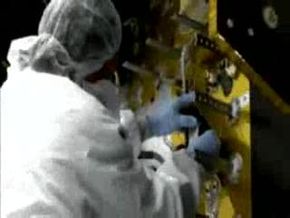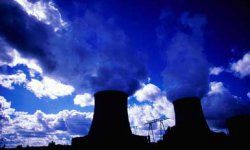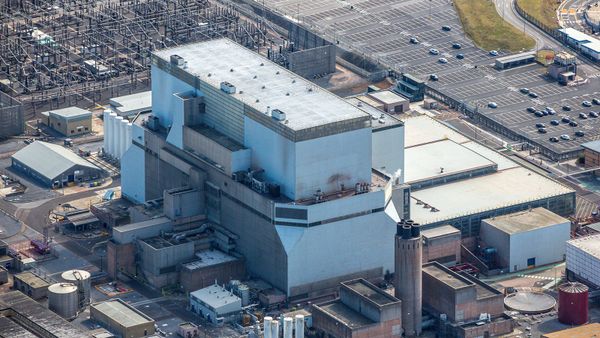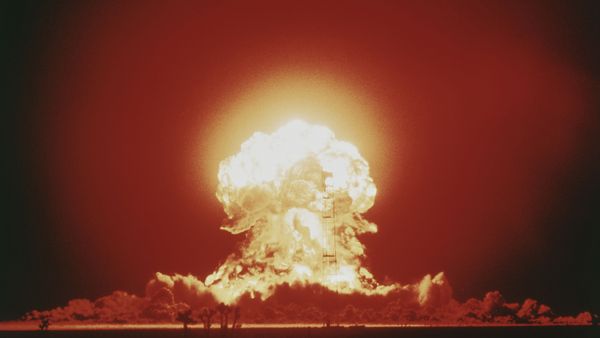The power that can be produced by water expanding into steam has been controlled and used for hundreds of years. In a nuclear reactor this reaction is caused by the heat generated in the process of nuclear fission. Enriched uranium gives off energy through nuclear fission. In a nuclear power plant this energy is controlled in a process that turns the heat generated by nuclear fission into electrical energy.
In the reactor core, the uranium is organized in bundles. Uranium pellets of the same length and diameter are arranged in rods, and these rods are gathered into bundles. The uranium bundles are placed in a container and submerged in water that acts as a coolant. The heat of the uranium bundles in the reactor core must be controlled to prevent overheating, which could cause the reactor to melt. Control rods in the uranium bundle are raised and lowered to control the core temperature as needed. The rods can also be lowered all the way down, to stop creating heat and to shut down the reactor in case of an emergency or to change the fuel.
Advertisement
The first step in producing electrical energy is enabling the water in the reactor core that contains the uranium bundle to expand into steam. In the next step, the steam exits the container to drive the turbine. The turbine spins a generator, and finally the generator produces power.
Some nuclear plants add another stage to the process that produces a second loop, which converts water to steam again before it drives the turbine. This prevents the radioactive water and steam from coming into direct contact with the turbine. Reactors can be filled with different types of coolant, to enable operation at higher temperatures.
Advertisement







